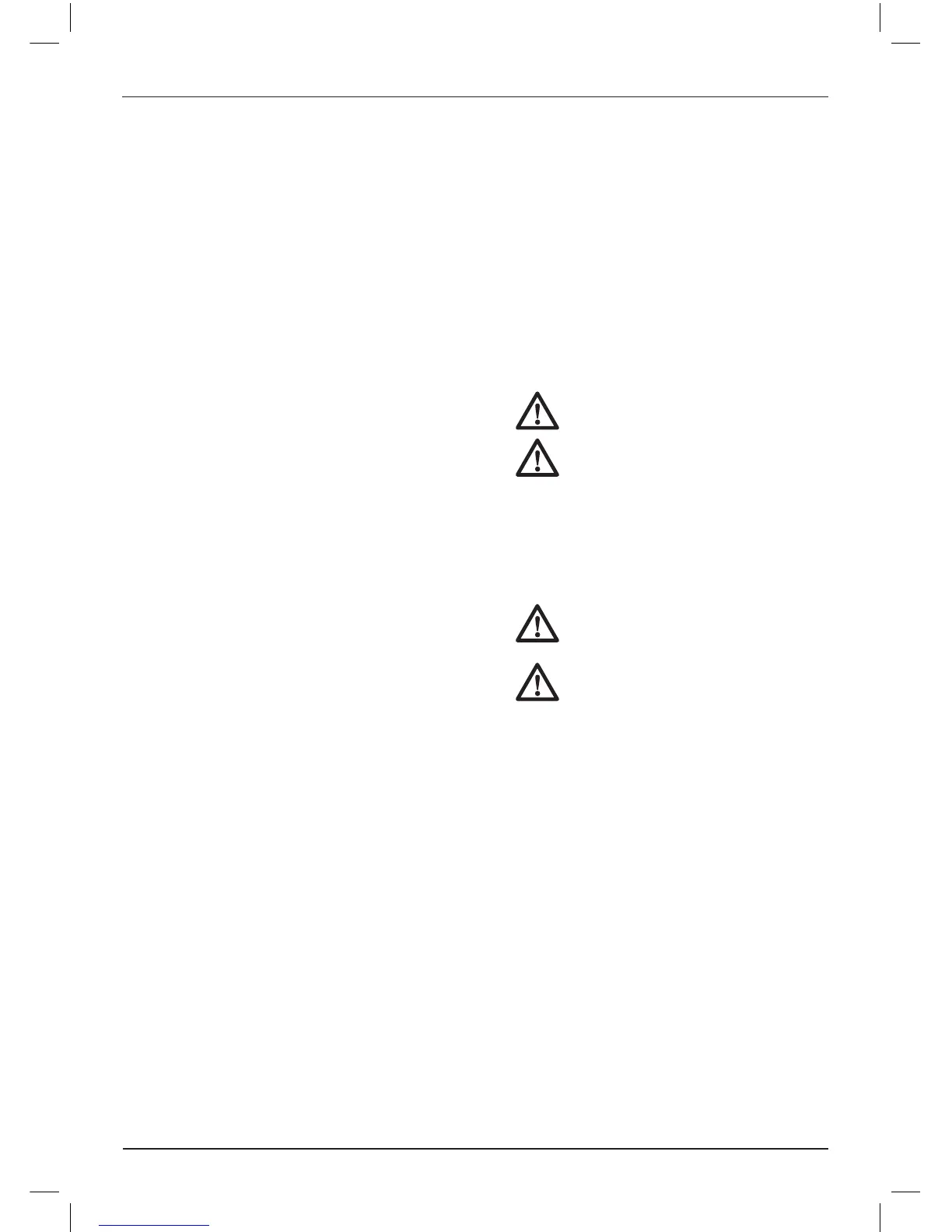25
English
in the parallel cutting position relative to the guide
rail. Figure 21 shows the saw in the bevel cutting
position relative to the guide rail.
Prior to Operation
• Make sure the guards have been mounted
correctly. The saw blade guard must be in
closed position.
• Make sure the saw blade rotates in the
direction of the arrow on the blade.
• Do not use excessively worn saw blades.
OPERATION
Instructions for Use
WARNING: Always observe the safety
instructions and applicable regulations.
WARNING: To reduce the risk of
serious personal injury, turn tool
off and disconnect battery pack
before making any adjustments or
removing/installing attachments or
accessories. An accidental start-up can
cause injury.
Proper Hand Position (Fig. 22)
WARNING: To reduce the risk of serious
personal injury, ALWAYS use proper
hand position as shown.
WARNING: To reduce the risk of serious
personal injury, ALWAYS hold securely in
anticipation of a sudden reaction.
Proper hand position requires one hand on the
main handle (C), with the other hand on the auxiliary
handle (F).
LED Worklight (Fig. 1)
The LED worklight (I) is activated when the trigger
switch is depressed. When the trigger is released,
the worklight will stay illuminated for up to 20
seconds.
NOTE: The worklight is for lighting the immediate
work surface and is not intended to be used as a
flashlight.
Switching On and Off (Fig. 1)
For safety reasons the trigger switch (A) of your tool
is equipped with a lock-off button (B).
Press the lock-off button to unlock the tool.
To run the tool, press the trigger switch (A). As soon
as the trigger switch is released, the lock-off switch
is automatically activated to prevent unintended
starting of the machine.
Before using the saw, the anti-splinter guard (AK)
on the guide rail will need tuning in. Refer to Tuning
the Anti-Splinter Guard.
TUNING THE ANTI-SPLINTER GUARD (FIG. 14)
The guide rail (AH) is equipped with an anti-splinter
guard (AK) that has to be tuned to the saw before
the first use.
The anti-splinter guard (AK) is situated on each
edge of the guide rail (Fig. 14). The purpose of this
anti-splinter guard is to provide the user with a
visible blade cut line while reducing the chipping that
occurs along the workpiece cut edge during cutting.
IMPORTANT: ALWAYS read and follow the
Setting the Circular Saw to the Guide Rail
before cutting the splinter guard!
STEPS TO TUNE THE ANTI-SPLINTER GUARD (FIG. 15–18)
1. Place the guide rail (AH) on a scrap piece of
wood (AL) with a minimum length of 100 mm
overhanging the workpiece. Use a clamp to
ensure that the guide rail is securely attached to
the workpiece. This will ensure accuracy.
2. Set the unit to a 20 mm depth of cut.
3. Place the front of the saw on the overhang end
of the guide rail, making sure that the blade is
positioned in front of the rail edge (Fig. 16).
4. Turn the saw on and slowly cut the splinter
guard along the full length of the rail in one
continuous operation. The edge of the splinter
guard now corresponds exactly to the cutting
edge of the blade (Fig. 17).
To tune in the anti-splinter guard on the other side
of the guide rail, remove the saw from the rail and
rotate the rail 180°. Repeat steps 1 through 4.
NOTE: If desired, the splinter guard can be bevelled
to 45°, then repeat steps 1 through 4. This allows
one side of the rail for cutting parallel cuts and the
other side of the rail is tuned in for 45° bevel cuts
(Fig. 18).
NOTE: If the anti-splinter guard is tuned in for
parallel cutting on both sides, then when the unit
is bevelled, the blade will not run true to the edge
of the anti-splinter guard. This is because the pivot
point of the unit bevel is not stationary and the blade
moves out over when the unit is bevelled.
Kerf Indicator (Fig. 19–21)
The front of the saw shoe has a kerf indicator (AM)
for vertical and bevel cutting. This indicator enables
you to guide the saw along cutting lines penciled
on the material being cut. The kerf indicator lines
up with the left (outer) side of the saw blade, which
makes the slot or “kerf” cut by the moving blade
fall to the right of the indicator. Guide along the
penciled cutting line so that the kerf falls into the
waste or surplus material. Figure 20 shows the saw

